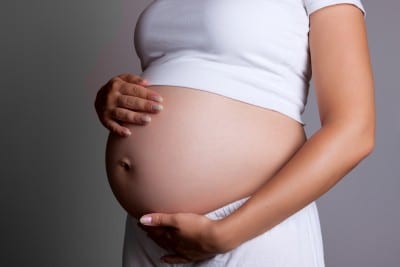Planning a very large family? You’d definitely be in the minority, since the average number of children in a typical household is only 2.5. If, however, you happen to follow through and forgo the ‘typical’ family model, you may end up receiving some interesting benefits.
In a study of nearly 5,000 Finish women who gave birth at least 10 times before, 2010, cancer rates were significantly lower when compared to the general population. In fact, out of all women followed during the three-decade period, only 656 cases of cancers were reported; that’s about 200 fewer cases than the general female population in Finland, or a 24% reduced risk.
Most of the cancers were gynecological (ovarian, endometrial and breast). In fact, for these types of cancers, the rates were 50 percent lower among the women who had delivered 10 or more children. However, researchers found that these women also had lower rates of basal cell skin cancer.
Researchers say that the reduced risk could be related to general health of the women; having 10 children would definitely require them to be extremely healthy. They also note that it is unlikely that this factor alone could explain the substantially lower cancer risks.
Study researcher Dr. Juha Tapanainen, of the Department of Obstetrics and Gynecology at Helsinki University Central Hospital, and colleagues do have a few ideas when it comes to possible factors.
According to the National Health Institutes of Health, women who give birth before the age of 20 have about half the risk of developing breast cancer than women who give birth for the first time after age 30. Researchers hypothesize that this is because pregnancy speeds up the process of breast cell maturation, and those mature breast cells are more resistant to cancer. To have 10 children, women would likely be in this younger group of mothers.
Another possibility is that pregnancy brings menstrual cycles to a halt, reducing the mother’s exposure to estrogen, which, according to the American Cancer Society, may increase the odds of breast cancer. More pregnancies would mean more halts to menstrual cycles, and decreased exposure to estrogen, thereby possibly reducing the risk of breast cancer.
Lastly, the halt of ovulation, and the decrease of hormone changes that occur during ovulation, may play a role in the decreased risk of ovarian and endometrial cancers.
Some of these benefits can be reaped by women who use birth control, which women in this study did not use (they were members of a church that does not believe in the use of birth control). Researchers believe that this group of women may have received an even bigger decrease, had they used birth control between pregnancies, but this is only speculation.
Another important point is that, while only women with 10 children were included in this study, other research projects have found that, once a woman gives birth to five children, her chances of developing cancer are lower than the general population. This means that, even if you’re not planning a family of 12, and only a family of seven or eight, you could still be receiving some cancer-reduction benefits.
It should be duly noted that pregnancy does come with its own set of risks – preeclampsia, premature birth, miscarriage, etc. This risk is further increased with age and with each child carried.
Still, as long as you are caring properly for your body, receiving quality pre-natal care, and are prepared to care for a large family, there’s no reason that you can’t reap the possible cancer-reduction benefits along with the joys of having a large, but amazing family.
Related Articles:
- Tulsa Couple Goes From Zero To Five Babies in 8 months!
- Mom Conceives Twins Again, Weeks after Losing Twins at Birth
- Four Swedish Women with Recipient Wombs Take the Next Step to Becoming Moms







